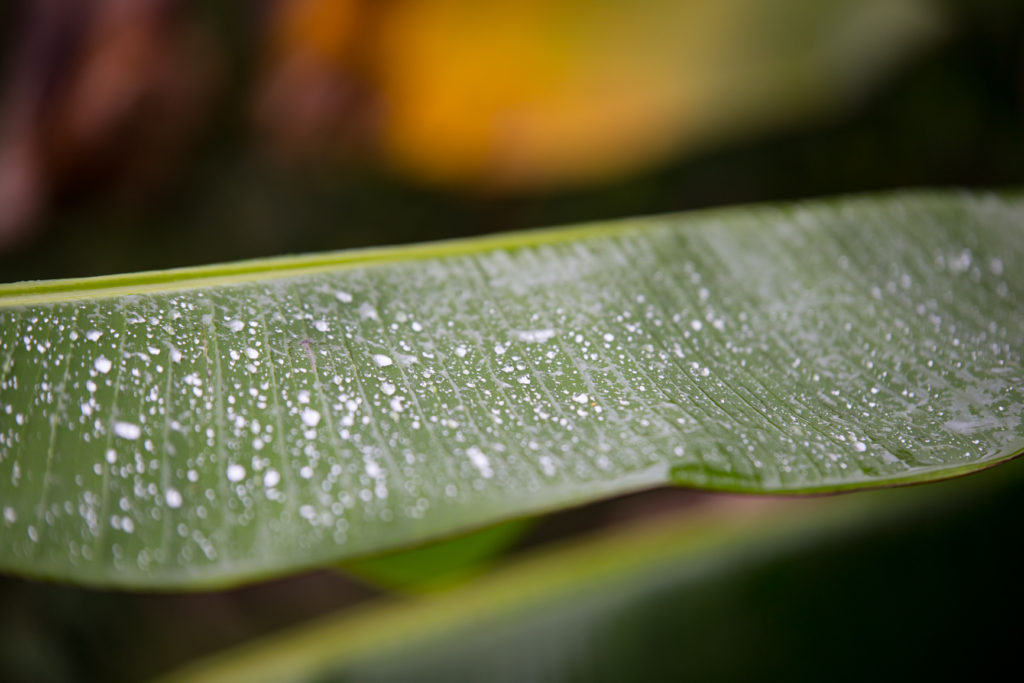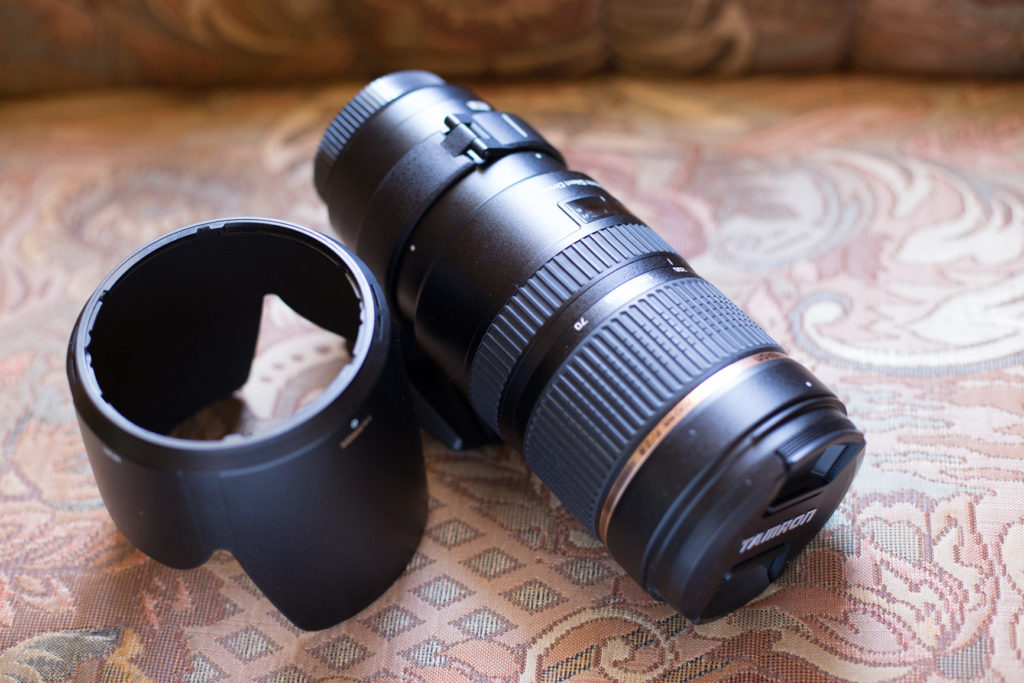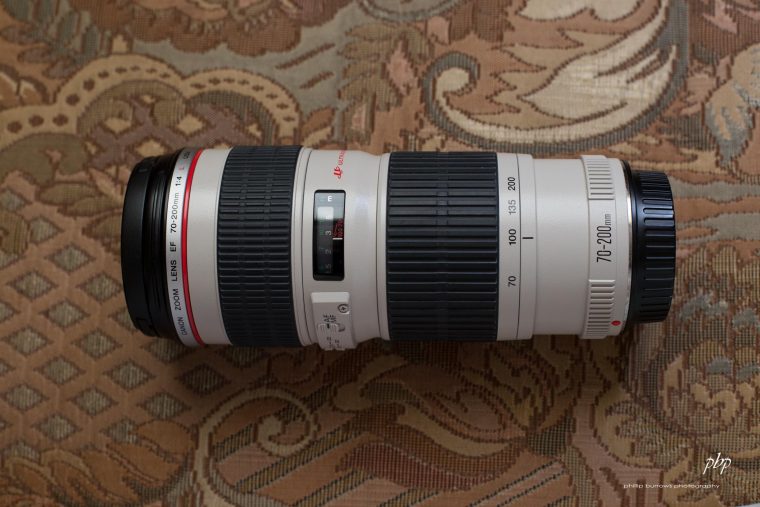The Tamron SP 70-200mm F/2.8 Di VC USD is the first lens that charted a new direction for Tamron. No longer were they to be the cheaper alternative to the usually higher quality OEM variants, they were now aiming to be contemporaries worthy of selection based on their performance. The SP designation is their equivalent of Canon’s red ring L series or of Sigma’s Art Series lenses. This SP series of lenses has grown to include a 24-70mm f/2.8, a 15-30mm 2.8mm f/2.8, a 90mm macro, and a hand full of primes all with Tamron’s VC image stabilization system.
A 70-200 2.8 lens is considered by many a photography professional to be an essential lens. Almost every lens manufacturer makes one. The relatively large constant aperture of f/2.8 allows for more versatility when lighting becomes challenging. Their heavy duty construction and the glass required to present a 2.8 aperture at 200mm means that these lenses don’t come cheap. Here is where third party manufactures have usually made their entrance offering similarly spec’d but lower quality. However Tamron, with their SP line is trying to buck that trend.
The Tamron SP 70-200mm f/2.8 Di VC USD is an update to Tamron’s older 70-200 model. This new model gets weather sealing, or as Tamron calls it moisture resistance, to help with shooting outdoors, VC or vibration compensation to allow hand holding at slower shutter speeds and Tamron’s new USD technology. USD is short for ultrasonic drive which is Tamron’s version of a ultrasonic focusing motor. This significantly improves the speed and accuracy of focusing which was probably the most commonly sighted negative of the older lens. The marketing material suggest that there are also some exotic glass elements to improve sharpness and contrast.
Specifications
| Focal Length | 70 – 200mm |
| Aperture | Maximum: f/2.8 Minimum: f/32 |
| Camera Mount Type | Canon EF |
| Format Compatibility | 35mm Film / Full-Frame Digital Sensor Canon (APS-C) Canon (APS-H) |
| Angle of View | 34° – 12° APS-C Picture Angle: 22° – 7° |
| Minimum Focus Distance | 51.2″ (1.30 m) |
| Maximum Reproduction Ratio | 1:8 |
| Elements/Groups | 23/17 |
| Diaphragm Blades | 9 |
Build quality
This lens is made of metal and plastic (more metal than plastic) and glass obviously. It packs quite a heft at just over 3 pounds. Tamron claims that this is the most compact 70-200 2.8 lens you can buy. Never the less it is still quite heavy for a lens in absolute terms. I was able to cover quite a bit of Manhattan on foot with this lens in tow so its possible for it to be a main stay in your camera bag. Just know that your shoulder won’t be to happy at the end of the day. Both Canon and Nikon variants of this lens are coveted for their outstanding build quality and considering their price they should be. The Tamron in my opinion has nothing to be ashamed of here. There is no shimmy in the gaps and everything turns and moves smoothly and is well dampened. Some of the plastic fascia can flex if pressed hard though but those parts don’t form part of the chassis of the lens. From my personal experience I feel fairly confident that this lens will to stand up to reasonable abuse. Just don’t go dropping it on the concrete floor or anything like that.

Image Quality
The lens is capable of stellar performance but it does have some issues. Stopped down to f5.6 the lens is probably at its sharpest. As a matter of fact this lens is probably the sharpest lens I have ever owned. At moderate apertures it can go toe To toe with any lens on the market. Distortion is minimal as unlikely to ever cause an issue with the final image which is par for the course for a 70-200 lens. Its not all good however as this lens does stumble when it gets to the extreme ends. Photographers have long coveted that look you get with a 200mm lens at f/2.8 and this lens has some issues here. Its still sharp in the center however the corners become noticeably soft on a full frame camera. If your using this lens for portraiture this probably isn’t that big of an issue as your subject is going to be closer to the frame anyway and just stopping down to f/3.2 does improve the situation. Also at this focal length the lens vignettes heavily. Vignettes aren’t always a bad thing as some photographers will add a vignette to emphasize the subject but it is something to take note of. I strongly suggest you shoot in raw for critical work as the Lightroom lens profile correction for this lens is not available with jpeg files. Overall this lens is capable of delivering images of the highest quality.

Bokeh
Bokeh, especially in relation to portraiture, is a very desirable characteristic of fast aperture and telephoto lenses. The Tamron SP 70-200mm F/2.8 Di VC USD performs well in this area, helping to provide your subject with separation from the background and thereby focusing your viewers attention. However the bokeh can tend to get a bit busy and maybe even a little distracting. All things being equal if I needed to do a head shot I would probably reach for the my 85mm 1.8 1st.

Focusing
This is an area where the old Tamron 70-200 suffered greatly. It lacked a focusing system that could keep up with the demands of professionals and serious armatures alike. To be fair I am not a sport photographer but I did have a chance to use the lens with some subjects that were moving somewhat erratically and unpredictably. Considering the shots were taken at night and at its widest aperture I thought I got a relatively high rate of keepers. That is once I got the right settings on the camera and some slight revisions to my technique. As with most of photography a lot depends on the skill of the photographer but overall focus was pretty reliable to the point where I stopped checking back my screen after every shot.

Issues
No lens is perfect, this one is no exception. This lens suffers from some serious focus breathing. Focus breathing is where a lenses apparent focal length changes with the distance to the subject. So when you are close to the subject the angle of view changes compared to when the subject you are focusing on is far away. Almost all lenses suffer from this phenomenon to some degree. In the case of this Tamron when you are close to your subject and zoomed in to 200 mm the lens behaves more like 150 mm. This means that the absolute magnification will be less than it should be. In practice its not as significant as my numbers (which are estimates from just eyeballing it) might suggest. You are still able to get lovely bokeh and subject separation at 200mm for portraiture and the issue sorts itself out as you focus further away. My copy of this lens seems to have some issues with decentering as at its widest aperture fully zoomed out it was difficult to get both extreme sides of the frame tack sharp. Also it needed a +6 micro focus adjustment on the telephoto end. However these issues were really only noticeable under controlled test.

Comparisons
Prior to this lens the 70-200 focal length was serviced by Caonon EF 70-200mm f4 L. This lens was designed at the dawn of the digital age but, as you would see from my blog, still capable of producing stellar images. My needs however were evolving and this lens was sadly not going to suffice anymore. Image stabilization and a faster aperture were definitely advantageous things to have and that lens had neither. What it did have though was excellent image quality in spite of its age. So how does the Tamron compare?
The above images are magnified 1:1 and if you look closely at the ropes on the mast of the boat the picture on the right is clearly sharper. Also notice the difference in exposure readings. Both pictures were shot in program mode and seconds apart.
As of the time of the writing of this article the Tamron price on Amazon was US $1,499 with 6 year US warranty compared to approximately US$1,899 the OEM Canon and US$2,796 for the newer Nikon version. However the international version of this lens can be had without a warranty for less than US $1,000. If you decide to go the international route make sure that you find a third party warranty or a independent repair shop willing to fix or repair your lens because Tamron USA will not service your lens even if you offer to pay them.
In Conclusion
At its current price the international version of this lens is in a class by itself. You’re simply not going to get a 70-200 f2.8 with features like weather sealing and image stabilization for that price. Even if you look in the used market that price point for a fully functional lens in good working order is hard to find. If you’re in the USA you can benefit from a six year warranty. That sort of time period is just unheard of in Canon and Nikon circles. If money is no object then get the Canon or the Nikon version. However when it comes to value for money the Tamron wins.






